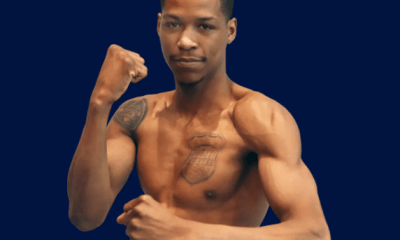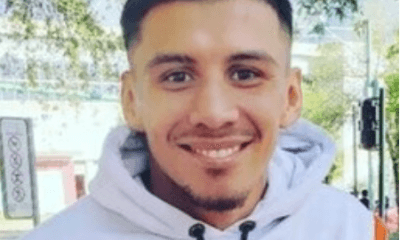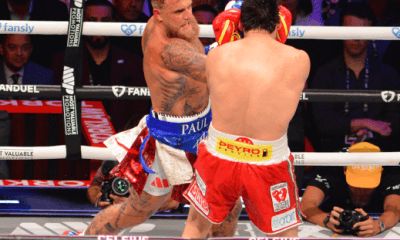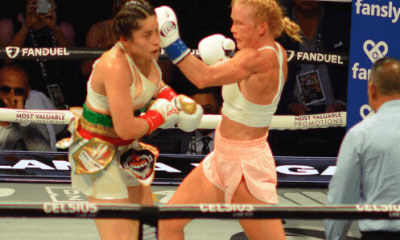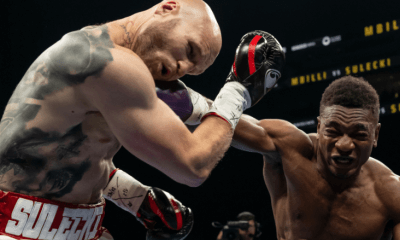Featured Articles
Avila Perspective, Chap 62: The Diamond Era of Boxing

A few weeks back, yet another newspaper sports column suggested boxing has deceased or is enduring its last rites.
It’s easy to claim the sky is falling but showing hard evidence to back a statement like this would be nice.
Where is the proof?
On the contrary, it’s very easy to prove that professional boxing or prizefighting has evolved to its greatest plateau. We are now in the “diamond era” of prizefighting, especially in the Southern California area.
With prizefighters arriving every day from all parts of the globe and women finally getting their place in the boxing ring, the sport of professional boxing has become bigger than it’s ever been.
Two simple facts point toward this massive growth: Saul “Canelo” Alvarez signed a contract worth more than $300 million and the number of boxing gyms in the Southern California area alone, exceed 100.
Both of those numbers are not exaggerated, they are under-stated.
Last year the redhead middleweight from Guadalajara, Mexico signed a five-year contract with streaming service DAZN for $365 million in October 2018. It gave him the highest contract for an athlete in the world. (That contract was later surpassed by Los Angeles Angels baseball outfielder Mike Trout who signed a 12-year contract for $426 million this past March.)
Annually, Alvarez ranks fourth behind international soccer stars Lionel Messi, Cristiano Ronaldo and Neymar. But he surpasses annually American sports stars like Russell Wilson, Aaron Rodgers, Lebron James, Stephen Curry and Kevin Durant who are ranked in the top 10 paid athletes in the world according to Forbes magazine.
So, if boxing is dead, where the heck is the sport coming up with this money?
Golden Era
Lots of old-timers suggest the best era for prizefighting was in the Depression era when fighters like Joe Louis, Max Baer, and Henry Armstrong were busting heads and luring crowds to baseball stadiums in New York, Chicago and Los Angeles and, of course, Madison Square Garden in New York City.
Others point to the post-World War II period when television arrived and Gillette Razors and some beer companies sponsored regular fight series. Many boxing stars like Kid Gavilan, Rocky Marciano and Beau Jack enjoyed stardom during this period.
Still even more feel adamant that the Golden Era was when Muhammad Ali, Joe Frazier, Roberto Duran and Sugar Ray Leonard rumbled in the boxing rings. The 70s and 80s were rife with televised boxing matches and also saw the advent of cable television jump into the game.
Though all of those eras were hugely popular, can they rival today in terms of the sheer number of prizefighters?
100 Gyms
At no time in the history of boxing has there ever been a period when a staggering abundance of boxing gyms existed in one area the size of Southern California. No country in the world can claim to have close to 100 gyms as seen today in the Golden State’s southern region.
Fighters arrive almost daily from Europe, Asia, Africa, Australia, South America and all parts of North America.
Name one continent and several fighters from any continent can be named or spotted training in one of the myriad of major boxing gyms scattered throughout the SoCal landscape.
Lately, the fighting island nation of Japan has been sending its prizefighters to Southern California where they come for a variety of reasons but mainly for strong sparring. No other place in the world can rival the variety of styles and abundance of fighters that can provide preparation for a big fight.
From San Diego to Santa Maria, the more than 100 boxing facilities boast dozens of prizefighters training at full speed in search of star status or million dollar paydays. Whether it’s second story former discos like the Wild Card Boxing Club in Hollywood, or backyard gyms like the Robert Garcia Boxing Academy in Riverside, or garages converted to handle a boxing ring like Shane Mosley’s in Big Bear, those facilities are filled with prizefighting hopefuls.
It’s unprecedented in the history of prizefighting.
“I can’t remember any time like this,” said Freddie Roach when asked about the overwhelming number of gyms throughout Southern California or in the East Coast. “There’s easily more than 100 gyms.”
When trainer Robert Garcia, a former world champion during the 1990s was asked if in excess of 100 gyms exist in the area, he wasn’t hesitant.
“Without a doubt there’s that many,” said Garcia whose gym in Riverside harbors about three dozen prizefighters. “I can’t remember another time where there were this many gyms.”
Boxing for money has been the world’s oldest sport; probably even pre-dating horseracing. It has always been around and will always be around because fighting has always attracted interest.
If a person can’t see that plain truth, well, I invite you to come along with me to visit most of these gyms because if you tried visiting all of them, it would take months. It’s a fact: boxing has not died nor is it dying, it has grown to an incredibly monstrous size.
Media Coverage
Since the arrival of the 21st century, a number of changes in how people can read or watch prizefighting have emerged including boxing web sites, boxing apps, and streaming. With those different forms of coverage, boxing has seen the arrival of money-backed streaming companies like ESPN+, DAZN and UFC Fight Pass join the boxing party by investing millions of dollars.
And when you include already involved television networks like Showtime, FOX and ESPN, you can see that they are not involved for charity. That’s not how capitalism works.
It’s pretty evident that boxing is growing and those participating are growing with it.
Who would have thought a boxing writer like me could survive financially by writing stories for web sites? After 30 years writing for newspapers, these past five years have been web driven boxing sites that kept the sport at a level never seen before. Newspapers are missing the boat.
We are without a doubt in the “diamond era” of boxing.
Photo: Mikey Garcia and friends at the Robert Garcia Boxing Academy
Fights to Watch
Thurs. UFC Fight Pass 6 p.m. PT – Toka Kahn Clary (26-2) vs Irvin Gonzalez (12-1).
Fri. Facebook 5 p.m. – Ferdinand Kerobyan (11-1) vs Oscar Molina (13-2-1).
Sat. ESPN+ 1 p.m. PT – Vasyl Lomachenko (13-1) vs Luke Campbell (20-2).
Sat. FOX 5 p.m. PT – Erislandy Lara (25-3-3) vs Ramon Alvarez (28-7-3).
Check out more boxing news on video at The Boxing Channel
To comment on this story in The Fight Forum CLICK HERE
-

 Featured Articles3 weeks ago
Featured Articles3 weeks agoAvila Perspective, Chap. 330: Matchroom in New York plus the Latest on Canelo-Crawford
-

 Featured Articles2 weeks ago
Featured Articles2 weeks agoVito Mielnicki Jr Whitewashes Kamil Gardzielik Before the Home Folks in Newark
-

 Featured Articles4 weeks ago
Featured Articles4 weeks agoAvila Perspective, Chap 329: Pacquiao is Back, Fabio in England and More
-

 Featured Articles4 weeks ago
Featured Articles4 weeks agoOpetaia and Nakatani Crush Overmatched Foes, Capping Off a Wild Boxing Weekend
-

 Featured Articles3 weeks ago
Featured Articles3 weeks agoCatching Up with Clay Moyle Who Talks About His Massive Collection of Boxing Books
-

 Featured Articles4 weeks ago
Featured Articles4 weeks agoFabio Wardley Comes from Behind to KO Justis Huni
-

 Featured Articles1 week ago
Featured Articles1 week agoMore Medals for Hawaii’s Patricio Family at the USA Boxing Summer Festival
-

 Featured Articles4 weeks ago
Featured Articles4 weeks agoDelving into ‘Hoopla’ with Notes on Books by George Plimpton and Joyce Carol Oates



